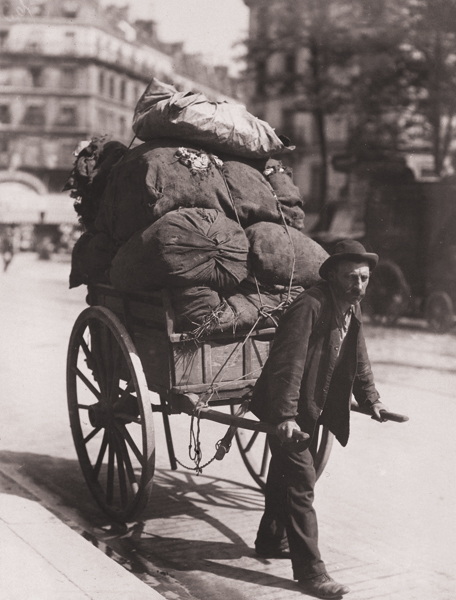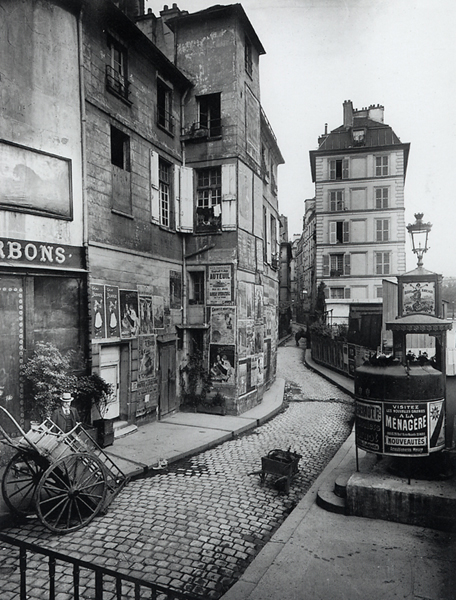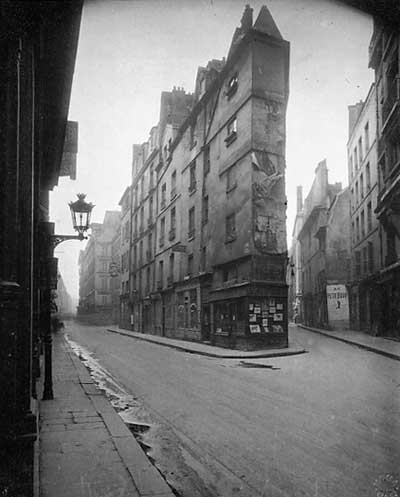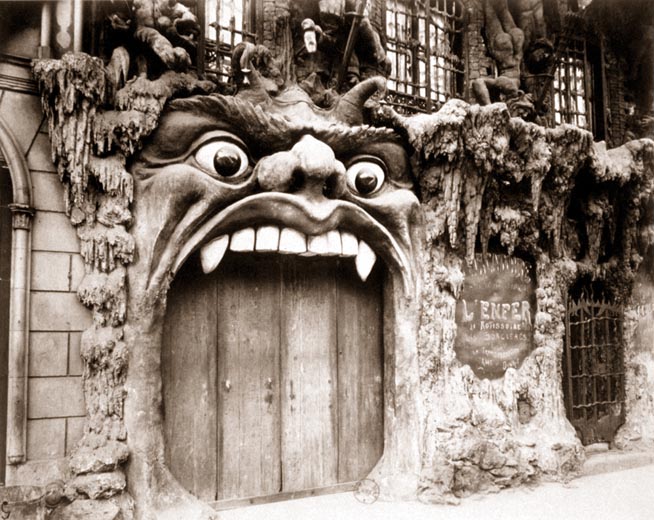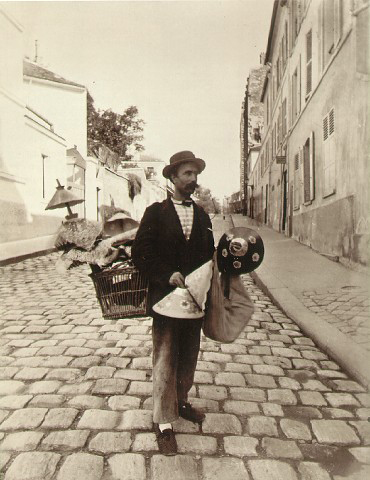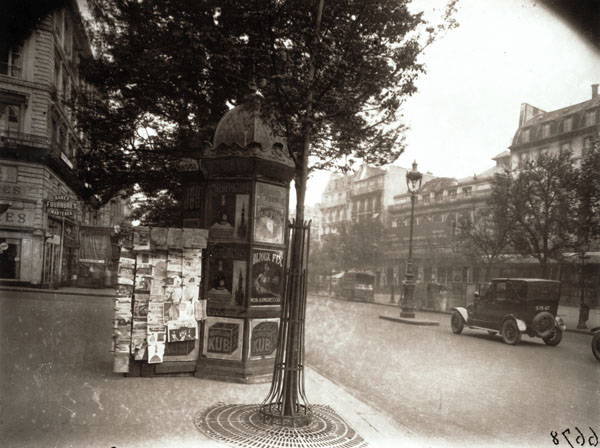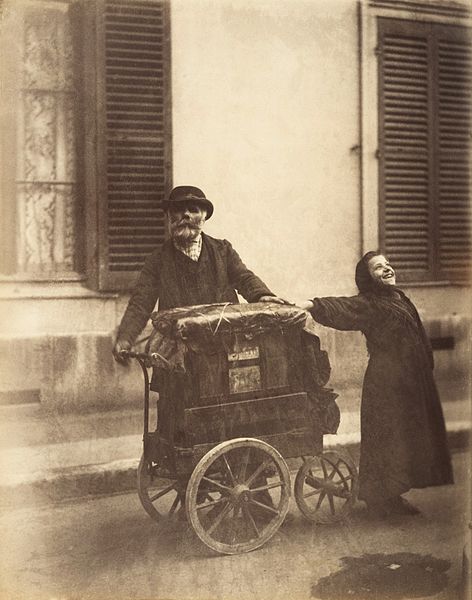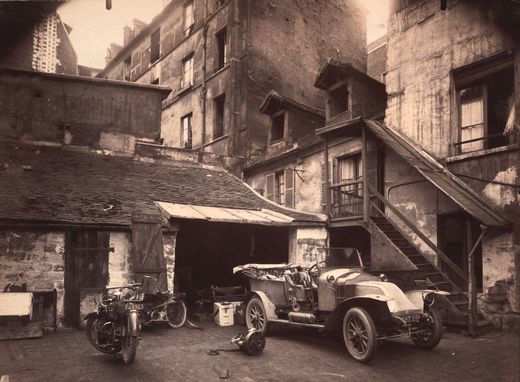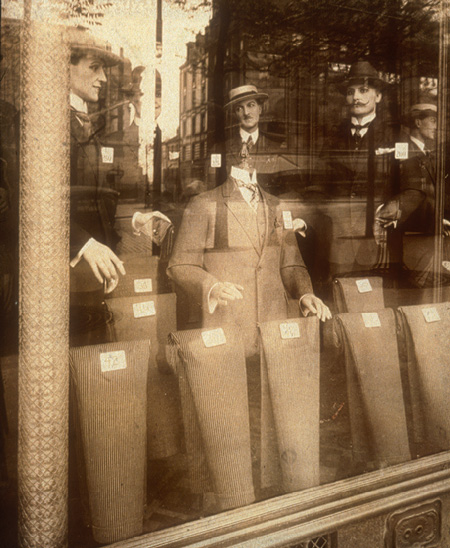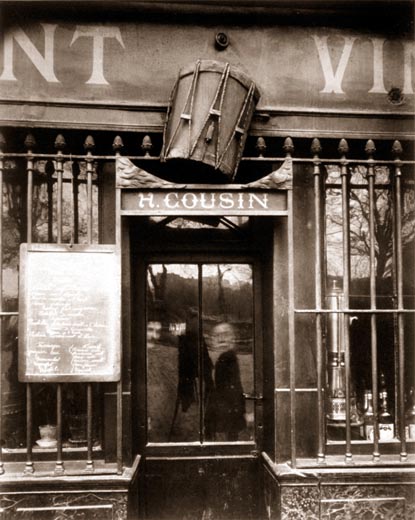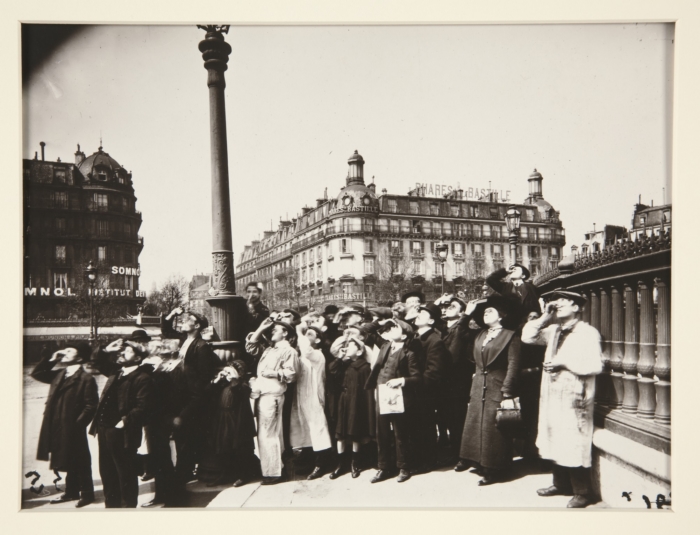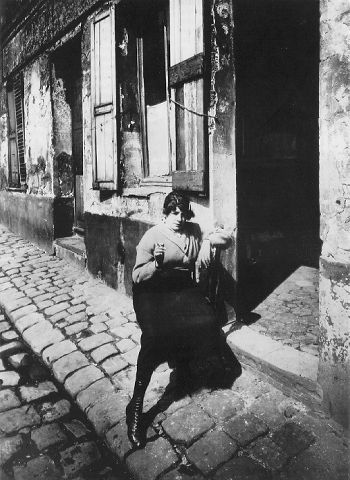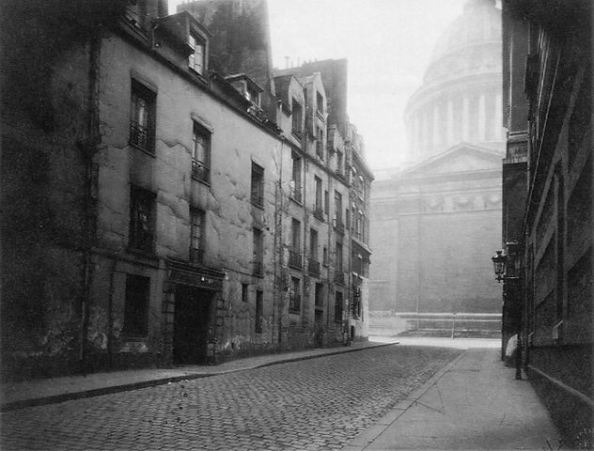<Back to Index>
- Photographer Eugène Atget, 1857
PAGE SPONSOR
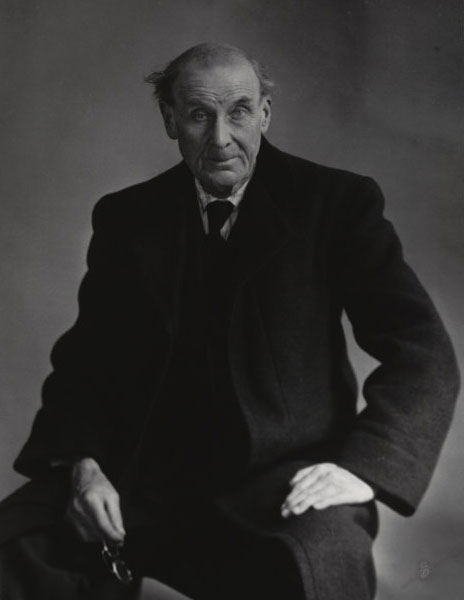
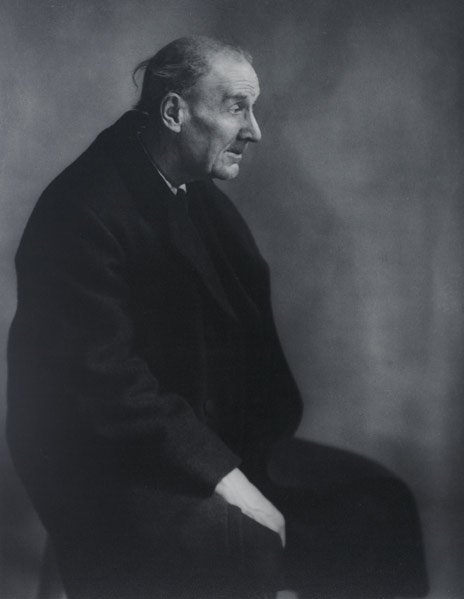
Eugène Atget (February 12, 1857 - August 4, 1927) was a French photographer noted for his photographs documenting the architecture and street scenes of Paris.
An inspiration for the surrealists and other artists, his work gained wide attention only after his death.
Jean-Eugène-Auguste Atget was born 12 February 1857 in Libourne. His father, carriage builder Jean - Eugène Atget, died in 1862, and his mother, Clara - Adeline Atget née Hourlier died shortly after. He was brought up by his maternal grandparents in Bordeaux and after finishing secondary education joined the merchant navy.
Atget moved to Paris in 1878. He failed the entrance exam for acting class but was admitted when he had a second try. Because he was drafted for military service he could attend class only part time, and he was expelled from drama school.
Still living in Paris he became an actor with a traveling group, performing in the Paris suburbs and the provinces. He met actress Valentine Delafosse Compagnon, who became his companion until her death. He gave up acting because of an infection of his vocal chords in 1887, moved to the provinces and took up painting without success. His first photographs, of Amiens and Beauvais, date from 1888.
1890 Atget moved back to Paris and became a professional photographer, supplying documents for artists: studies for painters, architects and stage designers.
Starting 1898 institutions such as the Musée Carnavalet and the Bibliothèque historique de la ville de Paris bought his photographs. The latter commissioned him ca. 1906 to systematically photograph old buildings in Paris. In 1899 he moved to Montparnasse.
While being a photographer Atget still also called himself an actor, giving lectures and readings.
During World War I Eugène Atget temporarily stored his archives in his basement for safekeeping and almost completely gave up photography. Valentine's son Léon was killed at the front.
During 1920 - 1921 he sold thousands of his negatives to institutions. Financially independent he took up photographing the parks of Versailles, Saint - Cloud and Sceaux and produced a series of photographs of prostitutes.
Berenice Abbott visited Atget in 1925, bought some of his photographs, and tried to interest other artists in his work.
In 1926 Valentine died, and Man Ray published several of Atget's photographs in la Révolution surréaliste.
Abbott took Atget's portrait in 1927. Eugène Atget died 4 August 1927 in Paris.
By the mid 1890s, Atget bought his first camera and began to photograph more than 10,000 images of the people and sights of Paris.
Atget photographed Paris with a large format wooden bellows camera with a rapid rectilinear lens. The images were exposed and developed as 18x24cm glass dry plates.
Between 1897 and 1927 Atget captured the old Paris in his pictures. His photographs show the city in its various facets: narrow lanes and courtyards in the historic city center with its old buildings, of which some were soon to be demolished, magnificent palaces from the period before the French Revolution, bridges and quays on the banks of the Seine, and shops with their window displays. He photographed stairwells and architectural details on the façades and took pictures of the interiors of apartments. His interest also extended to the environs of Paris.
In addition to architecture and the urban environment, he also photographed street hawkers, small tradesmen, rag collectors and prostitutes, as well as fairs and popular amusements in the various districts. The outlying districts and peripheral areas, in which the poor and homeless sought shelter, also furnished him with pictorial subjects.
Distinguishing characteristics of Atget's photography include a wispy, drawn - out sense of light due to his long exposures, a fairly wide view that suggested space and ambiance more than surface detail, and an intentionally limited range of scenes avoiding the bustling modern Paris that was often around the corner from the nostalgia-steeped nooks he preferred. The emptiness of most of his streets and the sometimes blurred figures in those with people are partly due to his already antiquated technique, including extended exposure times which required that many of his images be made in the early morning hours before pedestrians and traffic appeared.
The mechanical vignetting often seen at some corners of his photographs is due to his having repositioned the lens relative to the plate on the camera - exploiting one of the features of bellows view cameras as a way to correct perspective and control the image. He often said, "I have done little justice to the Great City of Paris", as a comment on his career.
Atget's photographs attracted the attention of artists such as Man Ray, André Derain, Henri Matisse and Picasso in the 1920s.
His death went largely unnoticed at the time outside the circle of curators who had bought his albums and kept them interred, mostly unseen. "This enormous artistic and documentary collection is now finished", he wrote of his life's work in 1920, though he did not stop working at this point.
After Atget's death in 1927, his remaining archive was split. 2000 negatives were donated to a Paris institute, with the remainder bought by Berenice Abbott with financial support by Julien Levy.
1929 eleven of Atget's photographs were shown at the Film und Foto Werkbund exhibition in Stuttgart.
Berenice Abbott exhibited, printed and wrote about his work, as well as assembled a substantial archive of writings about his portfolio by herself and others. Abbott published Atget, Photographe de Paris in 1930, the first overview of his photographic oeuvre and the beginning of his international fame.
The Museum of Modern Art purchased the Abbott/Levy collection of Atget's work in 1968. In 1985, MoMA completed publication of a four volume series of books based on its four successive exhibitions about Atget's life and work.
Atget, a Retrospective was presented at the Bibliothèque Nationale of Paris in 2007.
The Atget crater on the planet Mercury is named after him, as is Rue Eugène - Atget in the 13th arrondissement of Paris.
